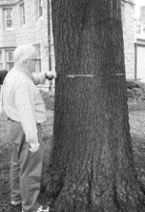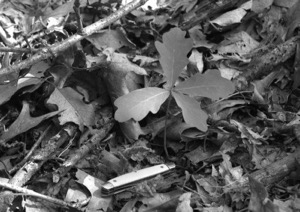Writer
Hank StelzerForestry is a specialized field of study and has its own vocabulary. As you become involved with the development and management of your woodland, you will often hear or read terms or phrases that might be unfamiliar. Understanding these terms and phrases will help in talking with a forester, understanding technical forestry publications, and provide a deeper understanding and appreciation of your woodlands. Look for and understand the bold terms below to improve your forestry knowledge.
Silviculture is the practice of growing and culturing or improving forest trees. Practices such as planting trees, marking timber stand improvement (TSI), or marking harvests to improve or regenerate the woods are all silvicultural practices.
Basal area (BA) describes the amount of surface area taken up by a tree on a per acre basis. If you were to measure the cross-sectional area of a tree (the surface area of the main stem) 14 inches in diameter 4-1/2 feet above the ground (termed DBH for diameter at breast height), you would have about 1 square foot of land covered by the trees’ cut surface — this is a tree’s basal area.

Diameter at breast height (DBH) refers to the measurement of tree diameter at a height of 4.5 feet above the ground. DBH provides a standard to measure diameter which is important because trees are often tapered.
The sum total of the trees’ cross-sectional measurements on an acre determines stocking based on basal area. A well-stocked stand will have around 80 to 120 square feet of basal area per acre. Understocked stands would have basal areas lower than this standard. Overstocked stands will have higher values. All forest management decisions are based on these stocking determinations.
Site index (SI) is a relative measurement of the woodland’s site quality which can then be translated into future wood production. Foresters use the height of trees in the dominant crown class. Trees in the dominant crown class are those whose crowns receive sunlight from all sides. Site index, then, is defined as the height that free-growing, dominant trees are expected to reach by age 50.
Co-dominant crowns receive light only from the tops. Intermediate crowns receive very little direct sunlight. Suppressed or overtopped crowns receive no direct sunlight. Tree crown classes are heavily evaluated when discussing trees that are removed or retained in future management work.
Many landowners are curious about how specific stands of timber have developed in their woodlands. Foresters have two rather broad methods to define the development of timber stands: even-age and uneven-age. Even-age stands are those where the age difference of the trees is less than 20 percent of the total age of the stand. Sometimes these stands are the result of a harvest that removed all the trees at one time. Uneven-age stands are common in Missouri’s woodlands, and they contain various ages and sizes of trees. Uneven-age stands occur when individual mature trees are removed from time to time.
Other stems in the forest also are evaluated during a stand evaluation. Advance regeneration are small trees or seedlings that are small but capable of becoming the next generation when mature trees are harvested. Snags are trees that are dead or dying and have few limbs, if any. These stems provide homes and feeding sites for a multitude of wildlife species.

Advance regeneration refers to tree seedlings and saplings that are developed enough to occupy the site if the overstory trees are removed.
Although it may seem there are many forestry terms to learn, most are fairly straightforward. Understanding these terms will help you to get the most from your woodland ownership experience.